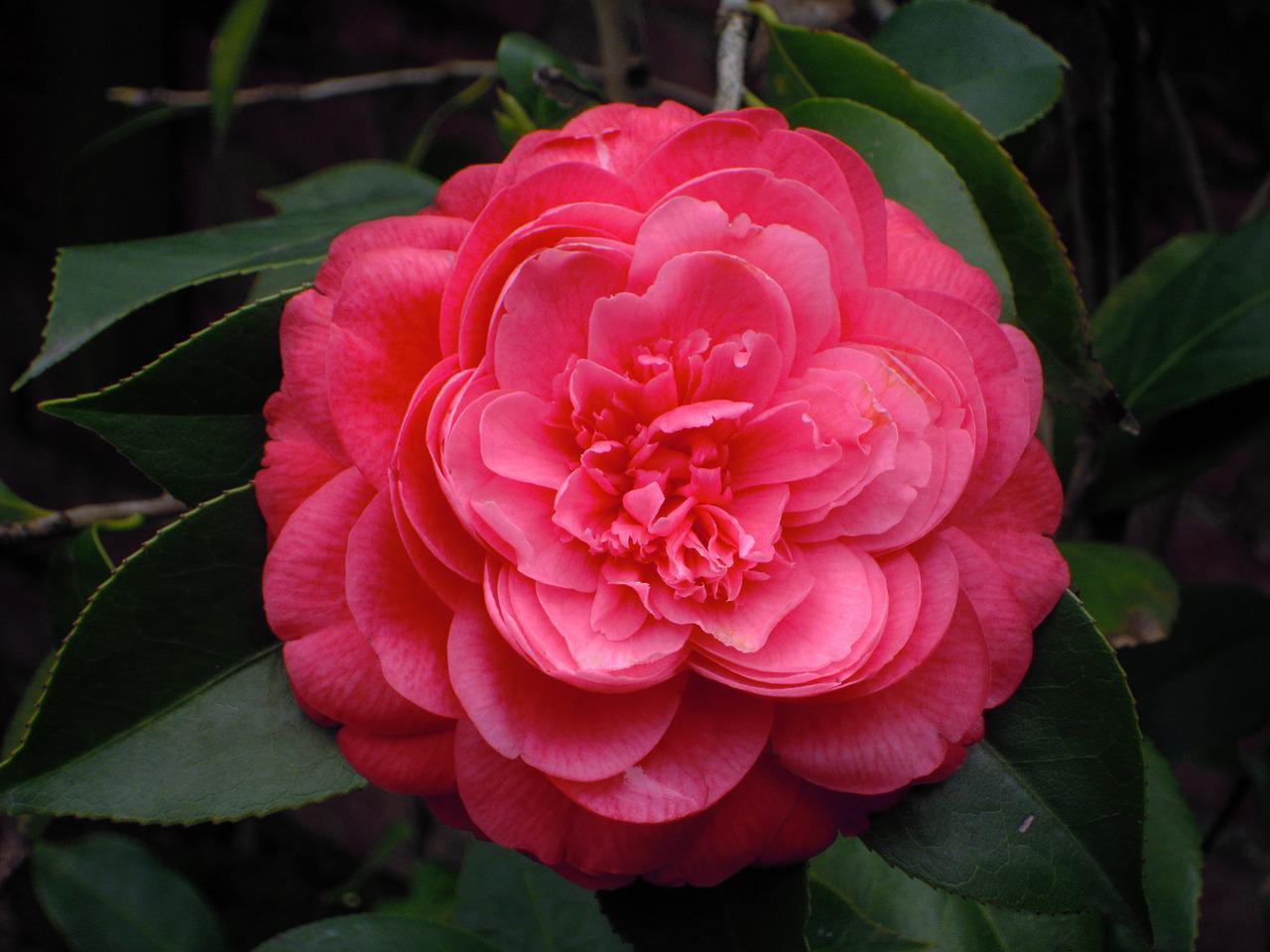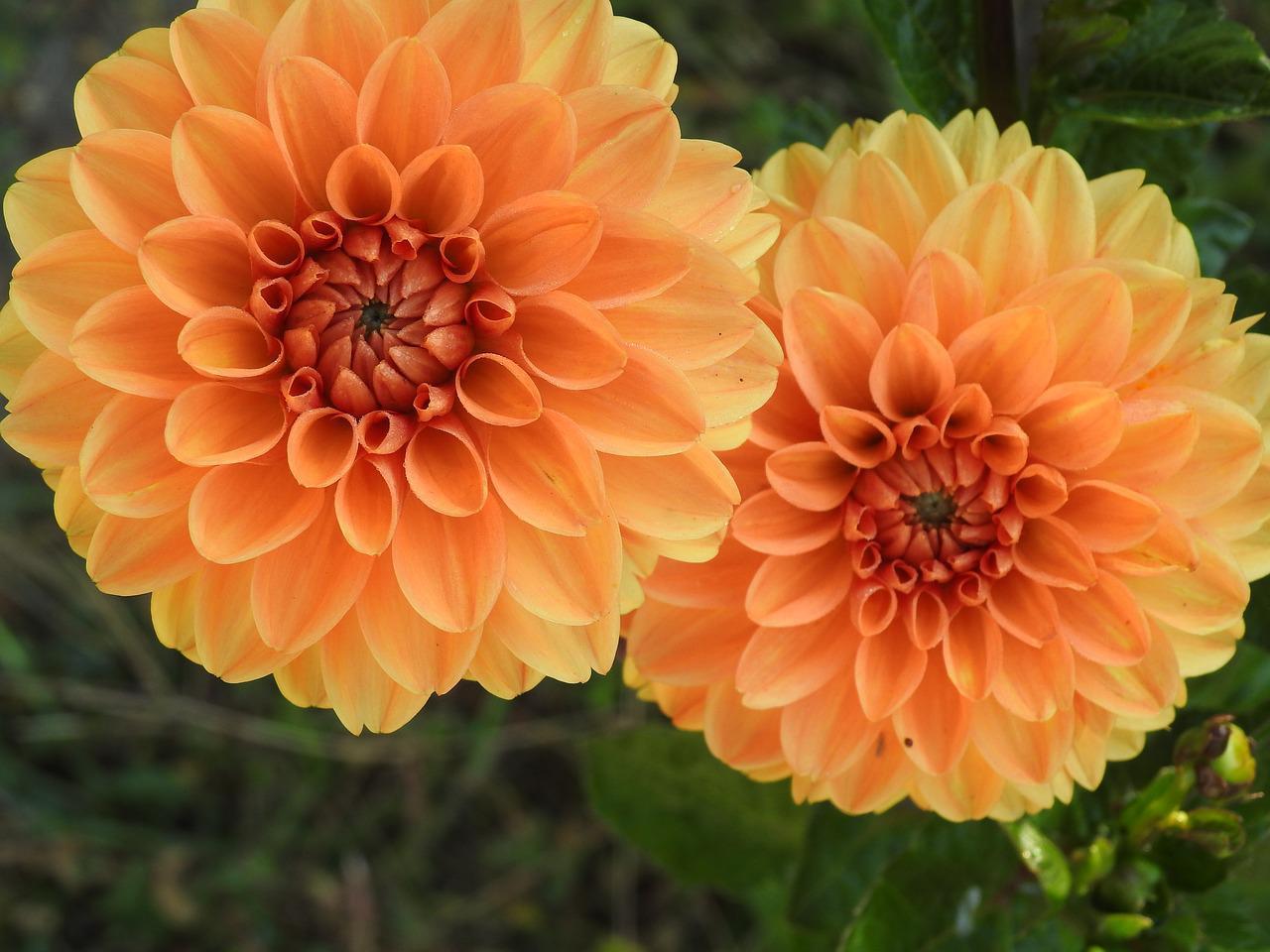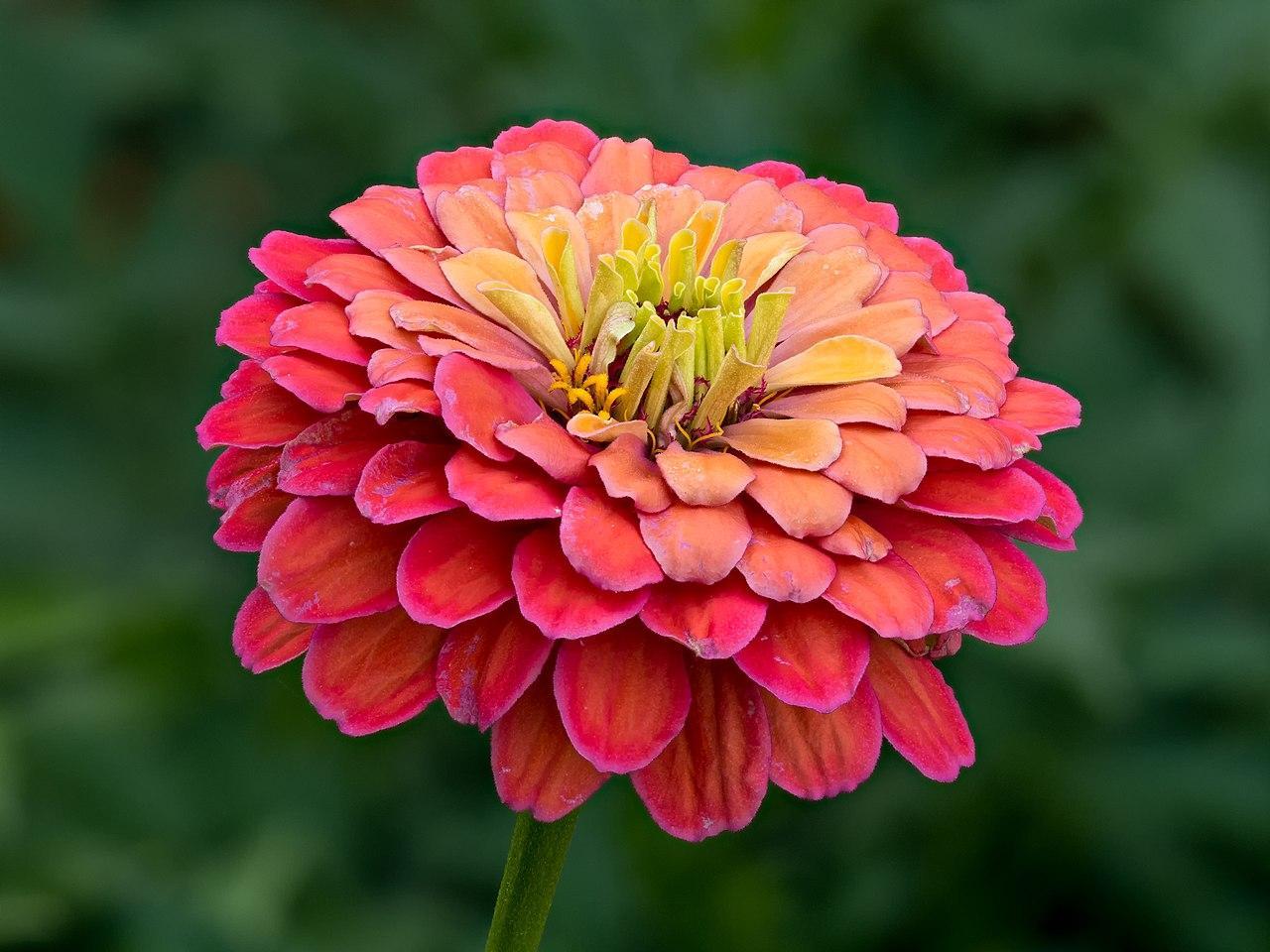Top 10 Plants with Big Flowers


Do you want a garden full of bright and bold blooms? Big, colorful flowers attract pollinators like bees, butterflies, and hummingbirds because of their eye-catching looks. These large flowers come in many vibrant colors, adding cheerful pops to your garden. Plus, many of these flowers have strong, pleasant scents that can fill your garden with wonderful aromas, creating a lovely experience.
This article by thedailyECO brings you 10 plants with big flowers that will transform your outdoor space.
Poppy
Native to Europe, Asia, and Africa, the poppy family (Papaveraceae) features vibrant flowers with four delicate petals in red, orange, or white (up to 6 cm). Blooming in spring and early summer, the corn poppy (Papaver rhoeas) is a common sight in disturbed soils.
Beyond beauty, poppies hold cultural weight. Their association with WWI cemented the red poppy as a symbol of remembrance. But their value goes deeper. The opium poppy (Papaver somniferum) offers culinary delights (seeds) and medicinal properties (source of morphine and codeine).
Poppies play a vital ecological role too. These vibrant blooms attract pollinators like bees and butterflies, ensuring their reproduction. The wind readily disperses their abundant seeds, allowing them to flourish in diverse locations Thriving in well-drained, sunny soil, they're often included in wildflower mixes, creating pollinator havens and adding a touch of wild charm.

Camellia
The camellia (Camellia spp.) is a popular ornamental shrub native to Asia, particularly China and Japan. It's prized for its elegant blooms and glossy foliage. In Japan, the camellia flower is associated with the divine and love and longevity.
Camellia flowers come in a variety of shapes, including single, semi-double, and fully double blooms. Colors range from white and pink to red and even yellow depending on the species and cultivar. Their petals boast a waxy texture with a glossy sheen, often smooth and sometimes featuring intricate patterns or ruffled edges.
Camellia plants are evergreen, meaning they retain their glossy, dark green leaves year-round. The leaves are typically leathery and can be oval or lance-shaped, depending on the species.
These plants thrive in mild climates with moderate temperatures and high humidity. They prefer partial shade to protect their delicate blooms from harsh sunlight. Well-drained, acidic soil is ideal for camellias. Adding organic matter like compost can help improve soil texture and fertility.
Finally, Camellia sinensis is the species from which tea is made. Cultivated primarily in Asia for its leaves, it's used to produce various types of tea, including green tea, black tea, and oolong tea.

Dahlia
The dahlia (Dahlia spp.) is a showy flowering plant native to Central America, particularly Mexico. Renowned for its diverse colors, shapes, and sizes, dahlias have become popular choices for gardens worldwide due to their beauty and ease of cultivation.
Dahlia flowers boast a wide variety of colors, including shades of red, orange, yellow, pink, purple, and white. Some varieties even feature bi-colored or multi-colored petals. Their form ranges from simple single-petaled blooms to double-flowered forms with layered petals and cactus-flowered forms with elongated, pointed petals. Additionally, pompon dahlias have small, densely packed spherical blooms, while dinnerplate dahlias boast large, impressive flowers.
Depending on the cultivar, dahlia flowers can range from a few centimeters to over 30 centimeters (over a foot) in diameter. Lush green foliage with toothed or lobed edges complements their colorful blooms, adding to the plant's attractiveness even when not in flower.
Dahlias thrive in full sun and well-drained, fertile soil. They prefer climates with mild temperatures and benefit from regular watering, especially during dry periods. Slightly acidic to neutral soil is ideal for dahlias, and adding organic matter like compost helps improve soil structure and fertility.
Dahlias hold symbolic meaning in some cultures, representing inner strength, creativity, and resilience. Additionally, their long vase life makes them popular cut flowers, frequently used in bouquets, floral arrangements, and wedding decorations.

Hibiscus
Hibiscus is a tropical flower cherished for its large, colorful blooms and lush foliage. Native to warm climates around the world, hibiscus plants are popular in gardens and landscapes for their ornamental value and cultural significance.
Hibiscus flowers come in a wide range of colors, including vibrant shades of red, pink, orange, yellow, and white. Some varieties feature bi-colored or multi-colored petals. The most common hibiscus flower form is single, with five or more petals radiating from a central stamen. Double-flowered varieties have multiple layers of petals, creating a fuller appearance.
These flowers come in a variety of sizes, ranging from 5 to 30 centimeters (2 to 12 inches) in diameter, depending on the species and cultivar.
The plant thrives in warm, tropical and subtropical climates with plenty of sunlight. They require protection from frost and prefer temperatures above 50°F (10°C). They benefit from regular watering during the growing season but can tolerate short periods of drought once established.
Hibiscus plants are prized for their ornamental value in gardens, landscapes, and containers. They are used as focal points, hedges, or as colorful additions to mixed borders. Some species of hibiscus produce edible flowers that are used in culinary dishes, teas, and beverages. Hibiscus tea, made from dried hibiscus flowers, is known for its tart flavor and vibrant color.
Explore the fascinating world of perennial vs. annual flowering plants in our companion article. Discover the secrets to keeping your hibiscus a vibrant garden feature for years to come.

Sunflower
Sunflowers are tall, annual flowering plants native to North America, belonging to the Asteraceae family. Renowned for their large, showy flower heads, they have become popular ornamental plants worldwide.
¡Sunflowers primarily boast yellow petals surrounding a dark brown center, though cultivars exist in shades of orange, red, and even white. Their size is highly variable, ranging from a few centimeters to over 30 centimeters in diameter, with giant sunflower varieties reaching even larger sizes.
Interestingly, the sunflower head we see is not a single flower, but a composite inflorescence. This means it's made up of hundreds or even thousands of individual florets working together. The outer ring of brightly colored petals, typically yellow, are called ray florets and contribute to the sunflower's characteristic sun-like appearance. The central cluster of smaller florets are known as disk florets and mature into the familiar sunflower seeds we enjoy.
Sunflowers thrive in sunny locations with warm climates. They are heat-tolerant and can withstand moderate drought once established. Well-drained, fertile soil with slightly acidic to neutral pH is ideal for optimal growth. Adding organic matter like compost can improve the soil structure and fertility.
Sunflowers offer both ornamental and culinary value. In gardens and landscapes, they are widely cultivated for their impressive size, vibrant colors, and long blooming period. From an agricultural standpoint, sunflower seeds are a valuable crop, rich in healthy fats, protein, and vitamins. They are enjoyed as a snack food and used as an ingredient in various dishes. Sunflower oil, extracted from the seeds, is a popular cooking oil known for its mild flavor and health benefits.
Dive deeper into the world of short-lived beauties in our guide to annual flowering plants. Discover a vibrant palette of options to keep your garden bursting with color all season long.

Lily
Lilies are a genus of flowering plants belonging to the Liliaceae family. Known for their beauty and cultural significance, lilies have been cultivated for centuries. They remain popular choices for adorning gardens, creating bouquets, and featuring in floral arrangements.
Lilies exhibit a wide range of colors, including white, yellow, orange, pink, red, and purple. Some varieties showcase spots or stripes for additional visual interest.
These flowers typically have six petal-like structures, known as tepals, that come in various shapes: trumpet-shaped, bowl-shaped, or star-shaped. Bloom size varies considerably, ranging from a few centimeters to over 30 centimeters in diameter. Many lily species, particularly Oriental lilies, are known for their strong, sweet fragrance.
Lilies flourish in temperate climates with cool to moderate temperatures. A period of cold dormancy is necessary for successful flowering, making them well-suited for regions with distinct seasons. Well-drained, fertile soil with a slightly acidic to neutral pH is optimal. Adding organic matter, such as compost, can improve soil structure and fertility.
Lilies are widely cultivated in gardens due to their elegant blooms, diverse colors, and fragrant varieties. However, these flowers also hold cultural significance in various societies. White lilies, in particular, are often associated with purity, renewal, and transformation. In fact, lilies are frequently used in funeral arrangements and memorials, symbolizing the innocence of the departed.
Finally, the fragrant oils extracted from lilies have applications in the perfume and cosmetics industry, adding a sweet scent to various products.

Lotus
The lotus (Nelumbo nucifera) is a revered aquatic flowering plant native to Asia and Australia. Renowned for its beauty, unique biology, and deep cultural significance, the lotus has been admired for centuries.
Lotus flowers come in a variety of colors, with white and pink being the most common. They boast multiple layers of petals that form a cup or bowl shape, reaching up to 30 centimeters (12 inches) in diameter.
The lotus thrives in shallow, muddy waters of ponds, lakes, and rivers. Anchored in the mud by its roots, it sends up long stems to support its leaves and flowers. Full sun exposure (at least six hours daily) is crucial for blooming. Lotus prefers rich, loamy soil that retains moisture well. Ideally, the soil should be submerged in shallow water, with a depth of 5 to 30 centimeters (2 to 12 inches) being optimal. Clean, still water is essential, and the plant cannot tolerate salty or polluted environments.
The lotus holds powerful symbolic meaning in many cultures, particularly Hinduism and Buddhism. Its ability to emerge from muddy water and bloom immaculately is seen as a metaphor for spiritual awakening and inner purity. Additionally, the lotus symbolizes resilience and renewal due to its ability to thrive in challenging conditions.
Besides its obvious ornamental value, various parts of the lotus plant are edible and used in Asian cuisine. Lotus seeds, roots, and young leaves are commonly incorporated into dishes and traditional medicine.

Peony
Peonies are a genus of flowering plants native to Europe, Asia, and North America. Prized for their large, showy blooms and delightful fragrance, they have been cultivated for centuries and remain popular among gardeners and florists.
Peonies boast a diverse color palette, with blooms ranging from white, pink, red, yellow, and coral. Some varieties showcase petals with color gradients or intricate patterns. These flowers exhibit various forms, including single, semi-double, double, and anemone types. Double peonies, known for their dense and ruffled appearance, are particularly admired. Bloom size varies considerably by cultivar, ranging from a few centimeters to over 30 centimeters in diameter.
Peonies thrive in temperate climates with cold winters, a period of dormancy crucial for successful flowering. These hardy plants can withstand a range of temperatures but prefer cool to moderate climates. Well-drained, fertile soil with slightly acidic to neutral pH is essential. Adding organic matter like compost improves soil structure and fertility.
Peonies are often associated with romance, prosperity, and good fortune. Traditionally symbolizing marriage, they are frequently used in wedding bouquets and decorations. In some cultures, peonies represent honor, elegance, and wealth, and are depicted in art and literature to convey these qualities.
While less common today, peonies have been used historically in traditional medicine for their purported health benefits.
The elegance of white flowers goes beyond the peony. Delve into our comprehensive guide to white flowering plants.

Angel trumpet
Angel's trumpet (Brugmansia spp.) is a genus of flowering shrubs or small trees native to the tropical regions of South America. Renowned for their large, showy flowers and intoxicating fragrance, they are popular ornamental plants in frost-free climates.
Angel's trumpet boasts large, trumpet-shaped flowers that are pendulous (hanging downward). These blooms can be quite impressive, reaching lengths up to 50 centimeters (20 inches). The flowers come in a diverse range, including white, pink, yellow, orange, and peach. Some varieties even feature bi-colored blooms.
These flowers emit a strong, sweet fragrance, particularly noticeable in the evening and at night, attracting moth pollinators.
Angel's trumpets thrive in warm, tropical, or subtropical climates. Being frost-sensitive, they require protection or indoor placement in cooler regions. Well-drained, fertile soil rich in organic matter is ideal. Adding compost or well-rotted manure can improve soil quality and fertility.
It's crucial to note that all parts of the Angel's trumpet plant are toxic if ingested and can cause serious health problems. Therefore, caution is advised when planting them in areas accessible to children and pets.
Intrigued by the Angel's Trumpet? Uncover the secrets of the nightshade family in our follow-up article.

Zinnia
Zinnias are showy flowering plants native to Mexico and Central America, prized for their diverse colors, shapes, and ease of cultivation. Beloved by gardeners of all levels, they are a popular choice for adding vibrancy and charm to gardens.
Zinnia blooms come in single, semi-double, and double forms, offering a variety to suit different tastes. They boast a dazzling array of colors, including red, pink, orange, yellow, purple, white, and even green. Some varieties feature multi-colored or bi-colored petals, adding further visual interest.
Several unique flower shapes exist, with some varieties boasting spiky petals (cactus-flowered), densely packed petals resembling dahlias (dahlia-flowered), and small, densely packed, ball-shaped blooms (pom-pom). Flower heads can range in size from a modest inch in diameter to an impressive six inches across.
Zinnias thrive in warm, sunny climates. As heat-loving plants, they perform best in full sun, requiring at least six hours of direct sunlight daily. Well-drained soil is essential, with fertile, loamy soil being ideal. However, zinnias are adaptable and can tolerate a range of soil types as long as drainage is adequate.
Their bright colors are linked to positive emotions and joy, while the long-lasting blooms can symbolize endurance and lasting beauty. Zinnias are ideal for beginner gardeners due to their straightforward cultivation and minimal maintenance requirements. Their ease of growth also makes them a great choice for children's gardens.
Craving even more rose-like blooms? Dive into our exploration of stunning flowers that resemble the classic rose, offering unique beauty and charm for your garden.

If you want to read similar articles to Top 10 Plants with Big Flowers, we recommend you visit our Decorative plants category.















